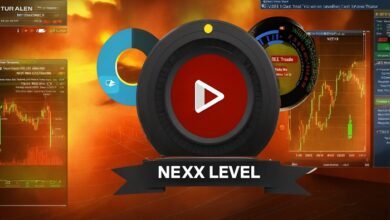Commodity Money: Key Insights and Applications

Introduction
Commodity money is a form of currency where the money itself holds intrinsic value. This is different from fiat money, which holds value by government decree. In this blog post, we will explore various scenarios that involve commodity money, its historical context, and its relevance in the modern economy.
What is Commodity Money?
Commodity money is money whose value comes from the commodity out of which it is made. Traditionally, this includes precious metals like gold and silver, but can also encompass other commodities like salt, shells, or even large stones.
Historical Examples of Commodity Money
Throughout history, various cultures have used commodity money. For example, Native Americans traded wampum beads, while in the Pacific, islanders used Rai stones. These items were valuable in themselves and used for trade.
Characteristics of Commodity Money
Commodity money has several defining characteristics, including intrinsic value, divisibility, and durability. These properties allow it to serve as a store of value, medium of exchange, and unit of account.
Scenario Analysis: Trading with Precious Metals
One common scenario involving commodity money is trading with precious metals like gold and silver. These metals are universally recognized for their value and have been used as global currencies.
Commodity Money in Barter Economies
In barter economies, goods are traded without a standard monetary system. Here, commodity money often plays a crucial role by providing a standard value measure, facilitating easier and fairer exchanges.
Commodity Money vs. Fiat Money
Understanding the difference between commodity and fiat money is crucial. While commodity money holds intrinsic value, fiat money’s value is derived purely from government regulation or law.
Modern-Day Relevance of Commodity Money
In modern economies, commodity money has mostly been replaced by fiat money. However, in times of economic instability, people often revert to commodity money, valuing its tangible worth.
Impact of Commodity Money on the Economy
The use of commodity money can significantly impact an economy, influencing inflation, exchange rates, and even monetary policy.
Legal and Regulatory Aspects
Various legal and regulatory considerations come into play with commodity money, especially concerning authenticity, storage, and transportation.
Conclusion
While not as prevalent as it once was, understanding which scenarios involve commodity money provides insight into the foundational aspects of our economic systems. Its tangible value offers a unique perspective on what we consider money and its role in society.
FAQs
1.What qualifies as commodity money?
Commodity money is any form of currency that has intrinsic value in itself, such as gold, silver, or other commodities.
2.Why is gold considered a strong form of commodity money?
Gold is durable, divisible, and maintains its value over time, making it a reliable store of value and medium of exchange.
3.Can commodity money still be used in modern economies?
Yes, while rare, some communities and groups still use commodity money, especially in areas where traditional currency is unstable.
4.What are the disadvantages of commodity money?
Commodity money can be cumbersome to transport and store, and its value can fluctuate based on market conditions.
5.How does commodity money differ from cryptocurrency?
Unlike commodity money, which has intrinsic value, cryptocurrencies are digital and derive their value from their technology and network effects.





